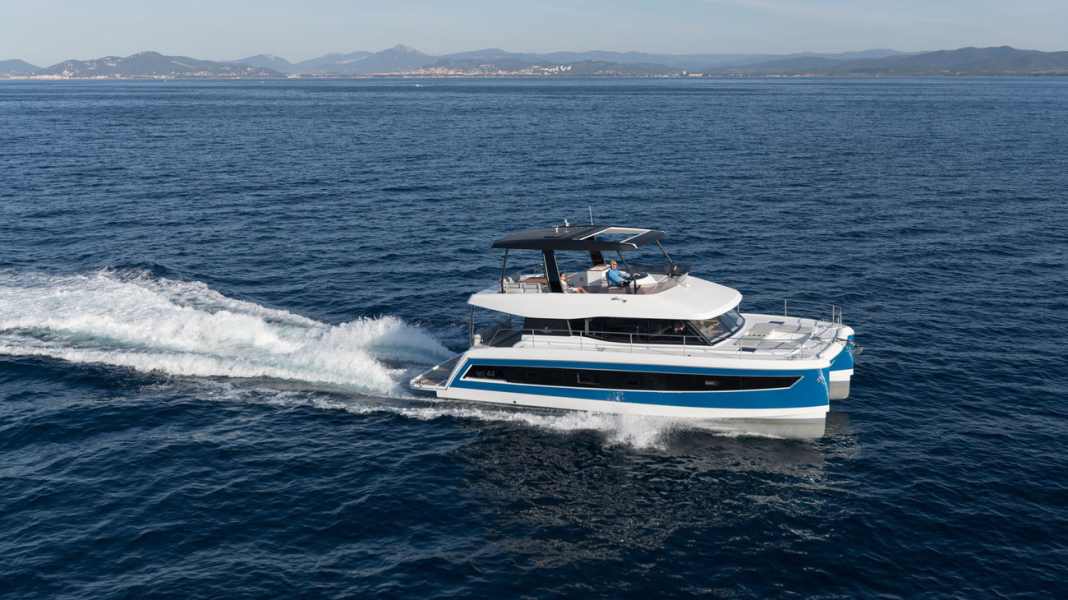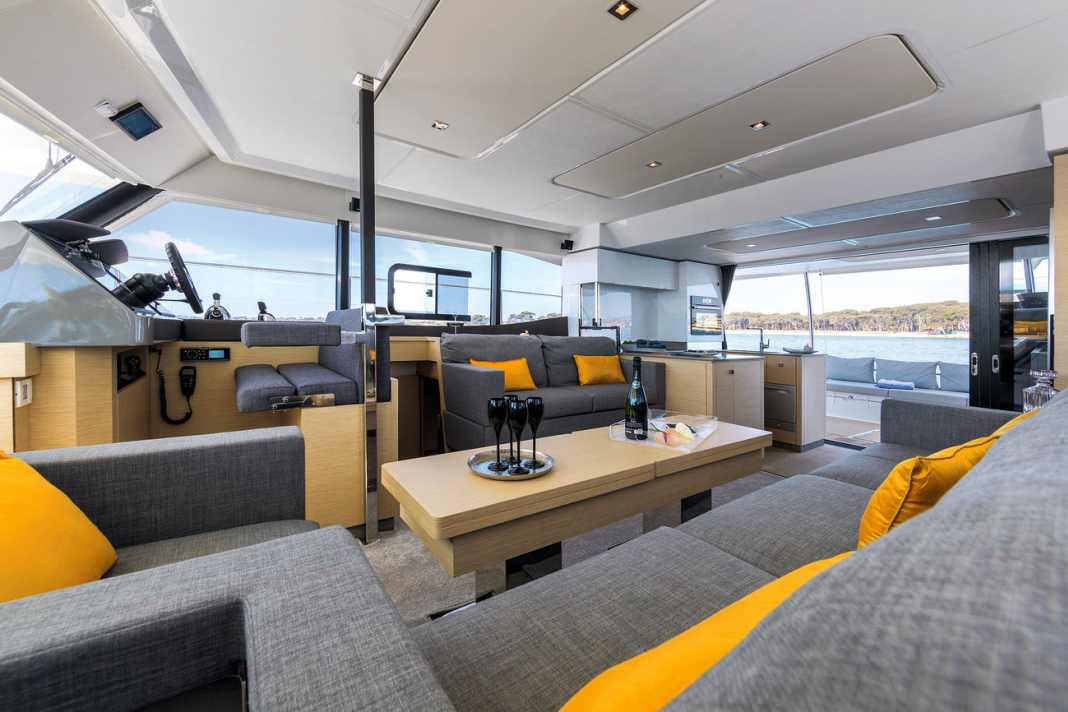
To date, the market has generallySailing catamarans converted to motorised catamaranshave been. This is also the case at the French shipyard Fountaine Pajot. However, customer demands have increased. It is no longer just former sailors who are looking for alternatives, but also seasoned motorboat drivers who are tired of their large boats, for example, and are looking for smaller ones with a more modern design.Plenty of space look around.
And that means that the fast displacement catamarans are no longer quite up to the job. Things have to move faster.
Fountaine Pajot has picked up on this and implemented it consistently. The shipyard has no longer just reworked the previous sailing boat hulls, it is now building genuine motor catamarans. In addition to the MY 37 and the MY 55, a completely new boat is now on offer:the motor yacht 44.






While the MY 37, presented in the December 2015 issue, already demanded some respect from us, the MY 44 goes one better. Especially asSuggestionsthat we expressed at the time,recorded and realised were developed. Such as theEngine compartment intake openingswhich were still located on both sides of the cockpit passageways to the bathing platform on the MY 37 and were therefore responsible for a lot of noise in the boat.
On the MY 44, they are now where they belong: on the outside of the hull. Or that on the MY 37 both helm stations were not equipped as you would normally expect on a motorboat. Nothing has remained of this. Both helm stations are now as they should be: predominantly functional and equipped withTouchscreens from Garmin (extra), on which everything that is available in terms of boat or engine technology can be displayed.
The design, on the other hand, has remained true to the original, giving the MY 44 an unobtrusively modern and timelessly dignified look. However, the sharp furniture corners and edges, which have no place on a motorboat, have been retained. The overall impression has improved in terms of workmanship, which is now considerably better, but still has room for fine-tuning.
In line with the motto 'if it's new, then it's new properly', the drive concept has also been revised. Where conventional shaft drives were still used for propulsion in the MY 37, the shipyard is now reaching deep into the technology box and offering the MY 44 exclusively with IPS drives from Volvo Penta, whose engines produce 260, 350 or 435 hp. Both engine compartments are easily accessible from above and you can get to all the technology installed without any problems. The corresponding fuse and main switch panel is located in the companionway to the owner's cabin. Visually unsuitable: In the engine compartments, only the hull is covered with protective paint, not the deck superstructure. Earlier, the ventilation system was praised, but now it gets a minus due to the unfavourable routing of the ducts. The intention is to adapt this. The untreated openings, which can damage cables and pipes over time, are criticised. We criticise the lack of a water alarm on the fuel pre-filters, but the design is commendable: two pre-filters with a changeover switch.
We are sailing the most powerful version with two IPS 600s, each with 435 hp under the deck, on the Mediterranean off Palma de Mallorca. Although "only" 44 feet long, it is also just under 22 feet or 6.61 m wide - these are considerable dimensions when it comes to manoeuvring in the harbour. If you set both control levers to forward, you need almost three boat lengths of space for a full circle. With one lever in forward and the other in reverse, the MY 44 turns almost on the spot. However, as it is equipped with IPS and therefore also with a joystick, manoeuvring in confined spaces is no problem. The MY 44 is easy to put on and take off, even in crosswinds or crosscurrents.
We complete the slow passages at 1200 rpm or at a speed of 6 knots. From a speed of around 10 kn (2000 rpm), a smooth break in the water at the stern signalled that our test boat was beginning to glide. We measured the maximum speed at 25 knots. Two hulls and two 1,000 litre diesel tanks are sufficient for a theoretical range of 1,530 nm plus 15% reserve at slow speed.
While we were unable to identify a fixed point on the MY 37 where you can travel economically at a fast planing speed, there is one on the MY 44, which, according to our measurements, is at 2600 rpm and a speed of 15 knots. That's a range of around 350 nm, and at full throttle you have to look for a bunker station after around 250 nm so that your reserves are not depleted. There is nothing wrong with that, the ranges are good.
During the rough water test, we follow a Mallorca car ferry and drive through its stern sea in all directions. The result: stable in every respect, dry and always safe. If waves pass underneath the test boat, it rolls with a stop, so to speak, thanks to the two hulls.
If there is one thing the MY 44 does not have, it is space or storage problems, neither in the engine compartments nor on or below deck. The entire port hull is reserved for the owner alone and two cabins in the hull opposite offer sleeping space for four. A fourth cabin is located forward of the saloon and is reserved for either crew or additional guests.
It goes without saying that there is no lack of bathrooms with all the trimmings on the boat. Thanks to the design, neither the saloon nor the flybridge are neglected. Outside, wide side decks, an expansive foredeck and a no less large cockpit offer space for a total of 30 people for inland cruising. At sea (CE category B), the shipyard allows up to 16 people. Peter Lässig

